Roadside shrines: A Mystery of Visiting Greece
Driving in Greece you can’t go very far without seeing little shrines, located along the side of the road. Often brightly painted, they often occupy the most scenic spots, on steep cliffs with beautiful views of the sea far below.
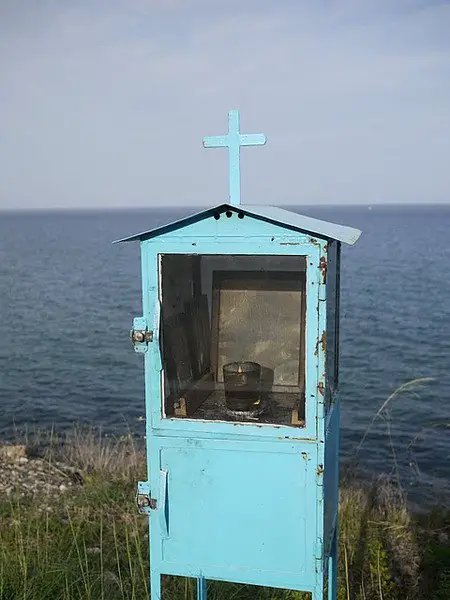
During a recent trip through the Peloponnesian peninsula, I decided to shoot as many of these mysterious little shrines as I could. I knew they were erected to memorialize the spot where an accident had occurred, and with young men riding their motorcycles around hairpin turns at night after partying with friends, these accidents are sometimes fatal.
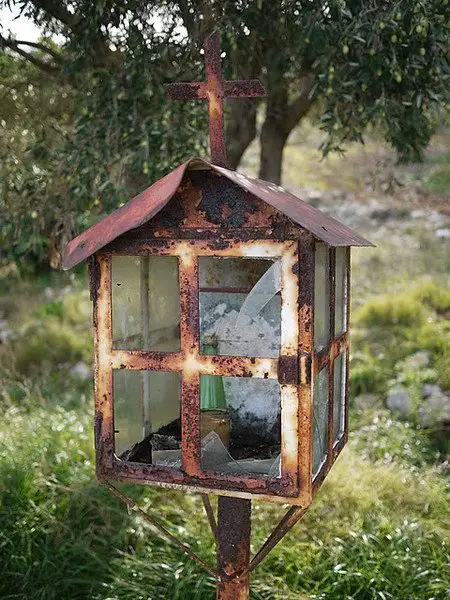
I found myself pulling over every couple miles. With cars whooshing past, I’d position my camera, trying to get the best angle for the light. Almost as much as the exterior of these mysterious boxes, what was inside intrigued me even more. Peeking through the smudged glass I wondered: Did anyone ever tend to these shrines?
Sometimes the bottoms would be layered with tin foil and shattered glass. In many were bottles – sometimes multiple bottles – filled with olive oil. Candles, long since snuffed. Photographs of loved ones – perhaps those who died at this very spot. Ornate framed icons of saints.
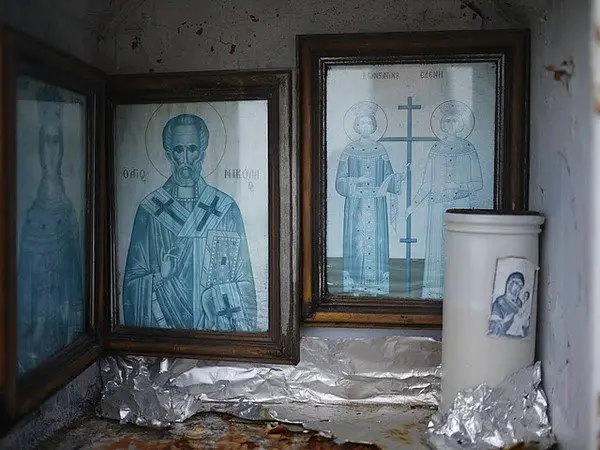
In some shrines even stranger objects are left behind. I have found packs of cigarettes and bottles of ouzo — what for, I wonder? If you’re paying your respects, is this to an invitation to take a moment for a cigarette and a shot of ouzo?
These Greeks, they really know how to live.
One afternoon, driving along a lonely road on the eastern coast of the Mani, I came upon this strange assemblage. At first I thought it was garbage, dumped unceremoniously along the side of the road, yet upon closer inspection, I realized it wasn’t a random pile. The olive oil can had a piece of wood positioned on top, just so, like a table. On top of that was a candle, and an unopened can and bottle of beer. A bouquet of flowers, long dried, slumped elegantly against the items.
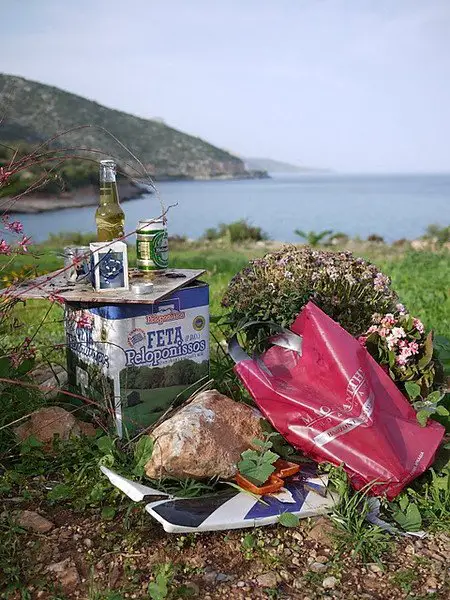
What happened here? I wondered. An abandoned picnic? An offering to Poseidon, the god of the sea? Or did an accident occur at this spot, and this was an unofficial shrine erected by loved ones? I stared at it for a long time, trying to figure out how long it had been there. From a look at the flowers, it had been several weeks at least. I walked around the perimeter, trying to find any other clues, but felt nothing but the wind blowing in off the sea, giving me a chill.
Eventually, I left the mysterious objects behind. Heading back into town I passed two shrines, positioned side by side, which I had already photographed. As I drove by I saw a woman approaching in my rearview mirror; she carried a small plastic bag and stopped at the little white box. I pulled off the road and watched, trying to be surreptitious. She opened the door and leaned into the shrine, rearranging items. After a few moments, she closed the tiny door, reverentially, and picked up her plastic bag.
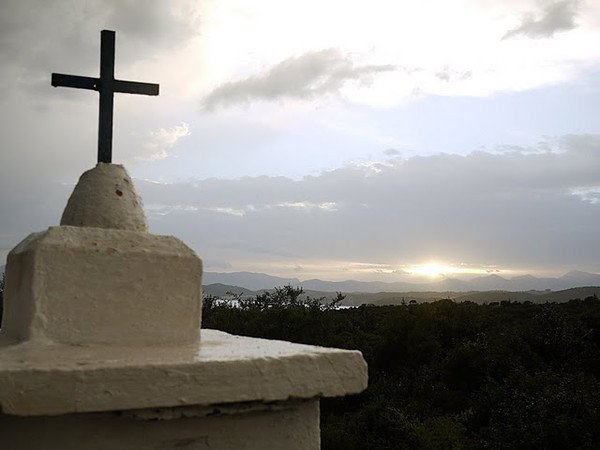
While it was reassuring to finally know that some of these little shrines are actively tended to…… I couldn’t get the image of the abandoned picnic out of my mind. Before I pulled back out onto the road I sat in my car. Watching the woman disappear around the bend in my rearview mirror, I realized some of life’s mysteries can be solved, some are never meant to be…
…and that Greece is a country filled with them.
*All photos by Amanda Summer
Pin for Later

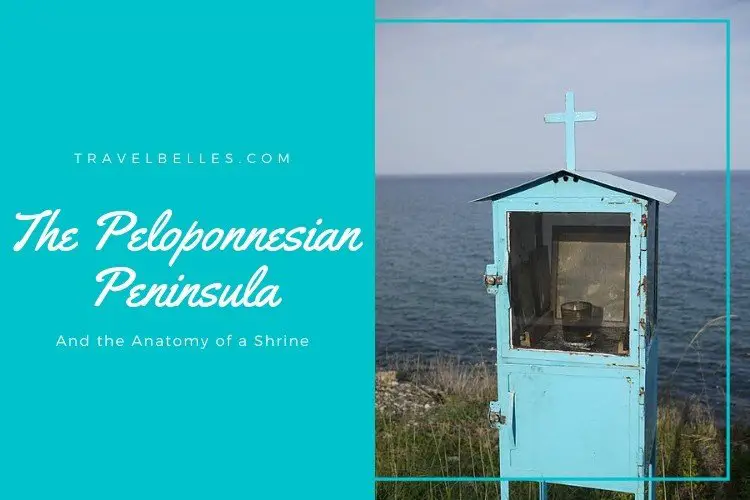
I noticed, and pondered over, these shrines myself during my trip to Greece last year. Eventually I asked a local friend to explain the mystery to me and he said: these shrines have been erected at the side of an accident, but contrary to Spain where they mark the spot of a fatal accident these shrines are there to celebrate a survival and luck escape. The candles, olive oil and a batch of matches are also there for passers by to light a candle in thanks whether they know the lucky survivor or not. Yes, Greece is full of mystery, but also of joy and optimism.
Wow, Inka – thanks for an insightful and most informative comment. And to Amanda too for the article!
That is so interesting, Amanda! You drew me right into that mystery and then Inka solved it. HOORAY for fabulous travel belles. 🙂
I so love the little mysteries that turn up when you have time to stop and really look at the scenes in the countryside. Lovely article.